反铲式单斗液压挖掘机的设计
液压挖掘机工作装置设计及其运动分析
反铲式单斗液压挖掘机工作装置的设计
反铲式单斗液压挖掘机工作装置设计及其运动分析【优秀】【word+9张CAD图纸】【毕业设计】
【带外文翻译】【54页@正文17200字】【详情如下】【需要咨询购买全套设计请加QQ1459919609】.bat
动臂A0.dwg
动臂衬套A3.dwg
挖掘机总图A0.dwg
摇杆A4.dwg
斗杆A1.dwg
斗齿A2.dwg
机器和机器零件的设计外文文献翻译.doc
液压挖掘机工作装置设计及其运动分析.doc
液压缸A2.dwg
连杆A3.dwg
铲斗A1.dwg
目 录
前言……………………………………………………………………………………… 1
一、绪论…………………………………………………………………………………2
(一)国内外研究状况………………………………………………………………2
(二)论文构成及研究内容…………………………………………………………2
二、总体方案设计……………………………………………………………………3
(一)工作装置构成…………………………………………………………………3
(二)动臂及斗杆的结构形式………………………………………………………5
(三)动臂油缸与铲斗油缸的布置…………………………………………………5
(四)铲斗与铲斗油缸的连接方式…………………………………………………5
(五)铲斗的结构选择………………………………………………………………6
(六)原始几何参数的确定…………………………………………………………7
三、工作装置运动学分析…………………………………………………………8
(一)动臂运动分析…………………………………………………………………8
(二)斗杆的运动分析………………………………………………………………10
(三)铲斗的运动分析………………………………………………………………11
(四)特殊工作位置计算……………………………………………………………15
四、挖掘阻力分析……………………………………………………………………18
(一)转斗挖掘阻力计算……………………………………………………………18
(二)斗杆挖掘阻力计算……………………………………………………………18
五、基本尺寸的确定……………………………………………………………… 20
(一)斗形参数的确定………………………………………………………………20
(二)动臂机构参数的选择…………………………………………………………20
1、 α1与A点坐标的选取……………………………………………………20
2、 l1与l2的选择……………………………………………………………20
3、 l41与l42的计算…………………………………………………………21
4、 l5的计算………………………………………………………………… 21
(三)动臂机构基本参数的校核………………………………………………… 23
1、 动臂机构闭锁力的校核……………………………………………………23
2、 满斗处于最大挖掘半径时动臂油缸提升力矩的校核……………………25
3、 满斗处于最大高度时,动臂提升力矩的校核…………………………… 26
(四)斗杆机构基本参数的选择……………………………………………………27
(五)铲斗机构基本参数的选择……………………………………………………28
1、 转角范围……………………………………………………………………28
2、 铲斗机构其它基本参数的计算……………………………………………28
六、工作装置结构设计…………………………………………………………… 30
(一)斗杆的结构设计………………………………………………………………30
1、斗杆的受力分析…………………………………………………………… 30
2、斗杆内力图的绘制………………………………………………………… 35
3、 结构尺寸的计算……………………………………………………………37
(二)动臂结构设计…………………………………………………………………39
1、危险工况受力分析………………………………………………………… 42
2、内力图和弯矩图的求解…………………………………………………… 43
3、 结构尺寸的计算……………………………………………………………45
(三)铲斗的设计……………………………………………………………………47
1、铲斗斗形尺寸的设计……………………………………………………… 47
2、铲斗斗齿的结构计算……………………………………………………… 47
3、 铲斗的绘制…………………………………………………………………48
七、销轴与衬套的设计…………………………………………………………… 49
(一)销轴的设计……………………………………………………………………49
(二)销轴用螺栓的设计……………………………………………………………49
(三)衬套的设计……………………………………………………………………49
八、总结…………………………………………………………………………………50
九、参考文献………………………………………………………………………… 51
十、致谢…………………………………………………………………………………52
附件一 外文翻译…………………………………………………………………… 53
液压挖掘机工作装置结构设计及运动分析
引 言
挖掘机在国民经济建设的许多行业被广泛地采用,如工业与民用建筑、交通运输、水利电气工程、农田改造、矿山采掘以及现代化军事工程等等行业的机械化施工中。据统计,一般工程施工中约有60%的土方量、露天矿山中80%的剥离量和采掘量是用挖掘机完成的。
随着我国基础设施建设的深入和在建设中挖掘机的广泛应用,挖掘机市场有着广阔的发展空间,因此发展满足我国国情所需要的挖掘机是十分必要的。而工作装置作为挖掘机的重要组成部分,对其研究和控制是对整机开发的基础。
反铲式单斗液压挖掘机工作装置是一个较复杂的空间机构,国内外对其运动分析、机构和结构参数优化设计方面都作了较深入的研究,具体的设计特别是中型挖掘机的设计已经趋于成熟。关于反铲式单斗液压挖掘机的相关文献也很多,这些文献从不同侧面对工作装置的设计进行了论述。而笔者的设计知识和水平还只是一个学步的孩子,进行本课题的设计是为对挖掘机的工作装置设计有一些大体的认识,掌握实际工程设计的流程、方法,巩固所学的知识和提高设计能力。
一、绪论
(一)国内外研究状况
当前,国际上挖掘机的生产正向大型化、微型化、多能化和专用化的方向发展。国外挖掘机行业重视采用新技术、新工艺、新结构和新材料,加快了向标准化、系列化、通用化发展的步伐。我国己经形成了挖掘机的系列化生产,近年来还开发了许多新产品,引进了国外的一些先进的生产率较高的挖掘机型号。
由于使用性能、技术指标和经济指标上的优越,世界上许多国家,特别是工业发达国家,都在大力发展单斗液压挖掘机。目前,单斗液压挖掘机的发展着眼于动力和传动系统的改进以达到高效节能;应用范围不断扩大,成本不断降低,向标准化、模块化发展,以提高零部件、配件的可靠性,从而保证整机的可靠性;电子计算机监测与控制,实现机电一体化;提高机械作业性能,降低噪音,减少停机维修时间,提高适应能力,消除公害,纵观未来,单斗液压挖掘机有以下的趋势:
1、向大型化发展的同时向微型化发展。
2、更为普遍地采用节能技术。
3、不断提高可靠性和使用寿命。
4、工作装置结构不断改进,工作范围不断扩大。
5、由内燃机驱动向电力驱动发展。
6、液压系统不断改进,液压元件不断更新。
7、应用微电子、气、液等机电一体化综合技术。
8、增大铲斗容量,加大功率,提高生产效率。
9、人机工程学在设计中的充分利用。
(二)论文构成及研究内容
本论文主要对由动臂、斗杆、铲斗、销轴、连杆机构组成挖掘机工作装置进行设计。具体内容包括以下五部分:
1、 挖机工作装置的总体设计。
2、 挖掘机的工作装置详细的机构运动学分析。
3、 工作装置各部分的基本尺寸的计算和验证。
4、 工作装置主要部件的结构设计。
5、 销轴的设计及螺栓等标准件进行选型。
九、参考文献
[1] 同济大学,太原重型机械学院.单斗液压挖掘机[M].北京:中国建筑工业出版社,1980:40-86,264-274.
[2] 金海薇. 液压挖掘机反铲工作装置CAD/CAM研究[D].沈阳:辽宁工程技术大学,2001
[3] 刘本学.液压挖掘机反铲工作装置的有限元分析[D].西安: 长安大学,2003,2
[4] 高衡、张全根主编.液压挖掘机 [M].北京:中国建筑工业出版社,1981.8,74 -75
[5] 成大先主编.机械设计手册. 连接与紧固[M].北京: 化学工业出版社,2004.1
[6] 胡传鼎编著. 机械制图画法范例[M].北京: 化学工业出版社,2005.1,221-227
[7] 杨晓辉主编. 简明机械实用手册 [M].北京:科学出版社,2006.8,680-689
[8] 范厚军主编.紧固件手册 [M].南昌:江西科学出版社,2004.1,357-640
[9] 机械设计手册编委会.机械设计手册第一卷 [M].北京:机械工业出版社,2004.8,
[10]、徐灏主编.机械设计手册(4).北京:机械工业出版社,1991
[11]、王文斌.机械设计手册(3).北京:机械工业出版社,2004
[12]、孟少龙主编.机械加工工艺手册.北京:机械工业出版社,1991
[13]、中国出版社第三编辑室主编.公差与配合标准手册.北京:中国标准出版社,1996
[14]、章宏甲、黄谊主编.?液压传动.北京:机械工业出版社,2002
[15]、刘希平主编.?工程机械构造图册. 北京:机械工业出版社,??1990
[16]、陈育仪编著.?工程机械优化设计.?北京:中国铁道出版社,??1987
[17]、孔德文,赵克利,徐宁生主编. 液压挖掘机,化学工业出版社, 2007,10
[18]、唐增宝,常建娥主编. 机械设计课程设计(第3版),华中科技大学出版社, 2006
[19]、张铁主编. 液压挖掘机结构、原理及使用,石油大学出版社,2002,12
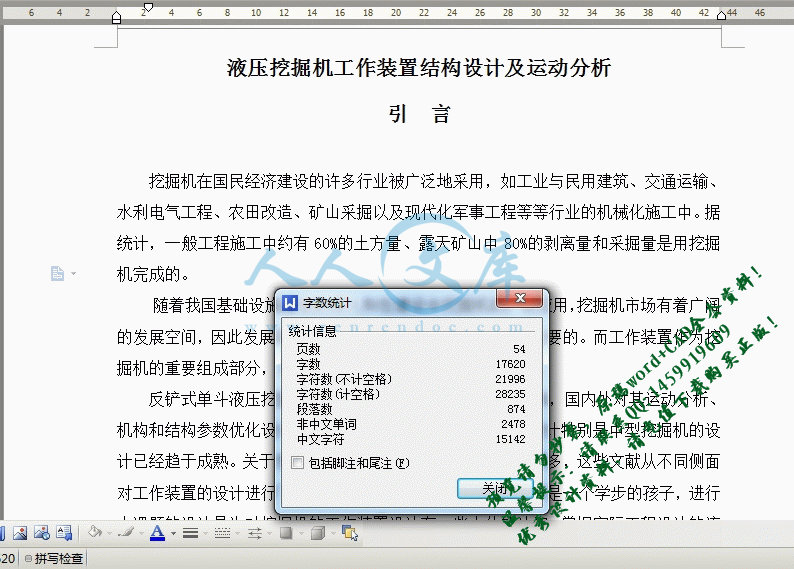
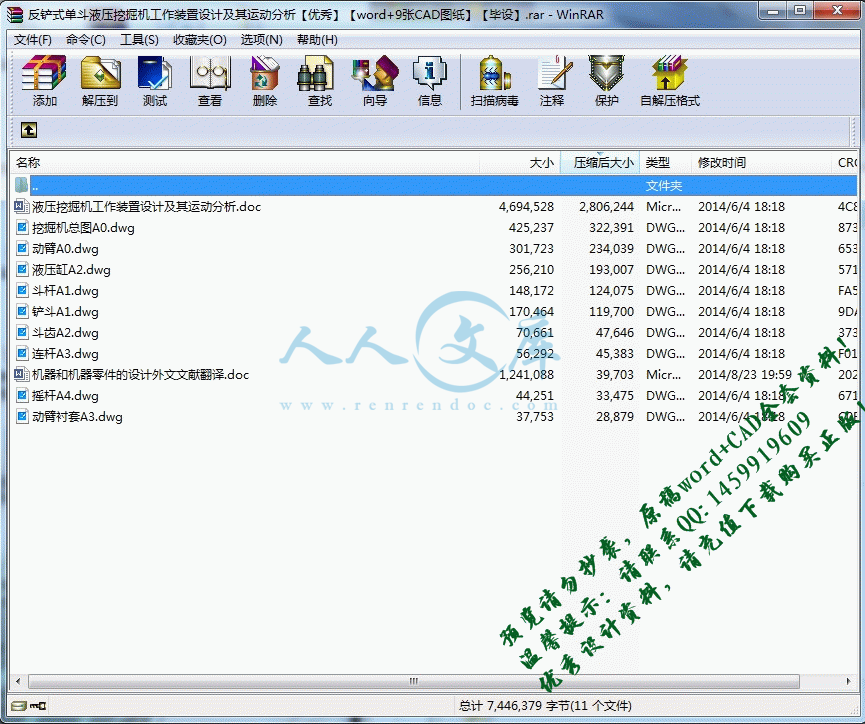
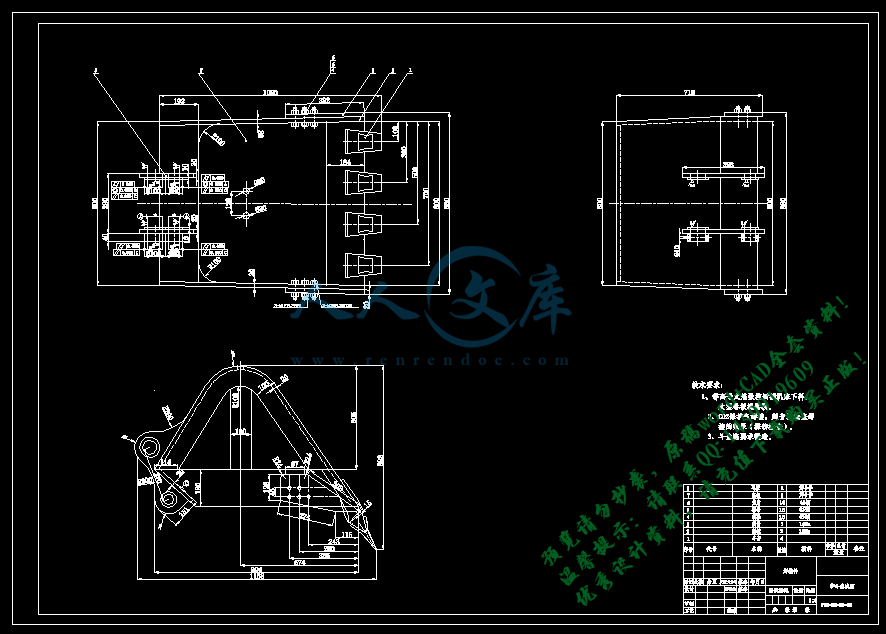

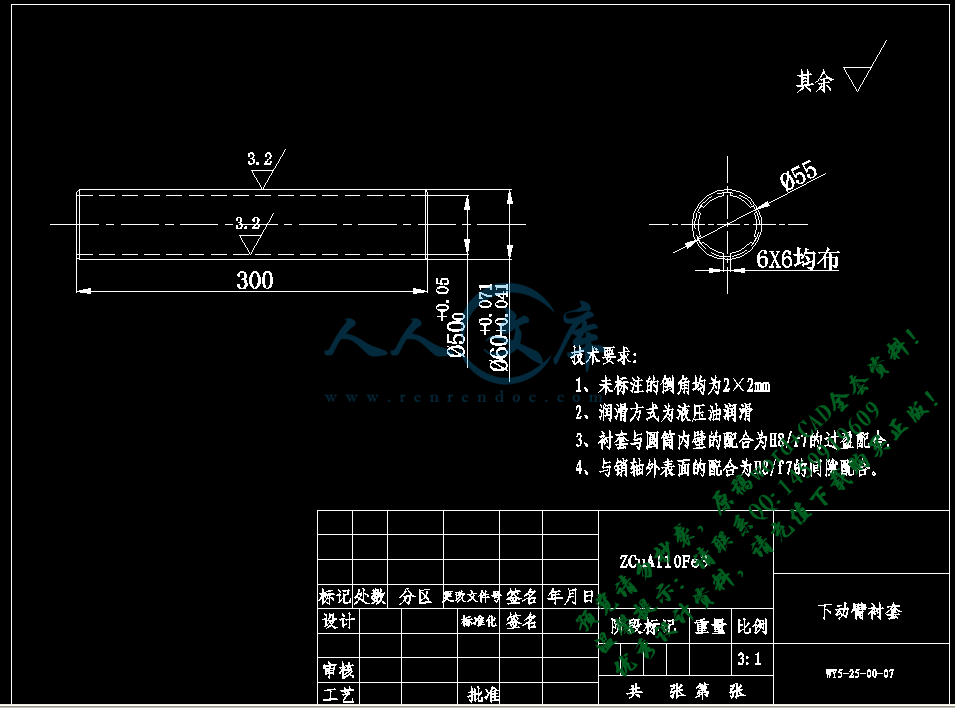
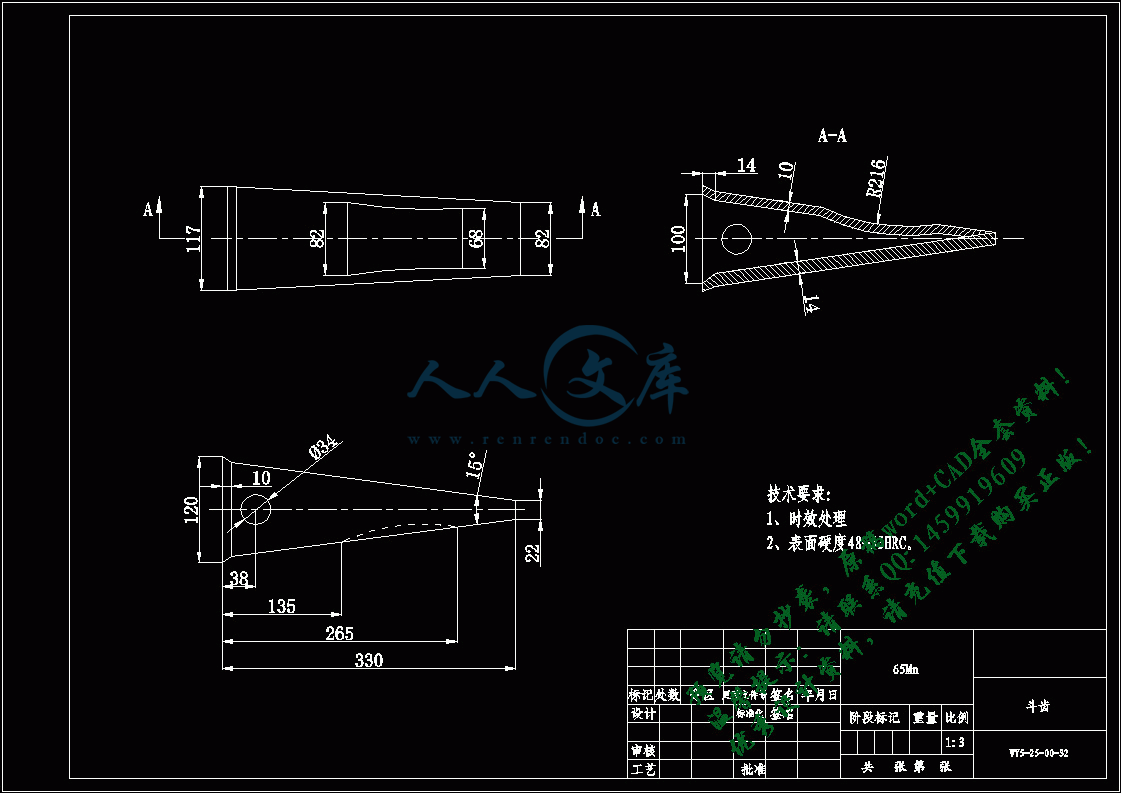


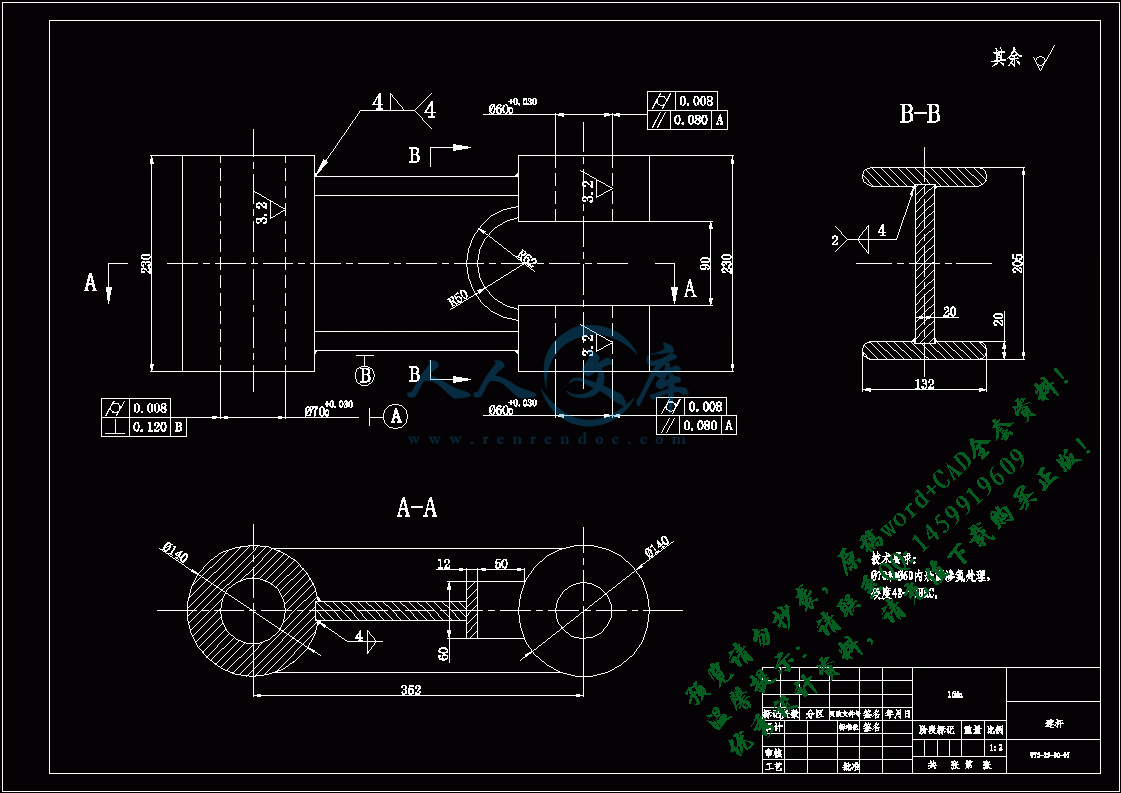
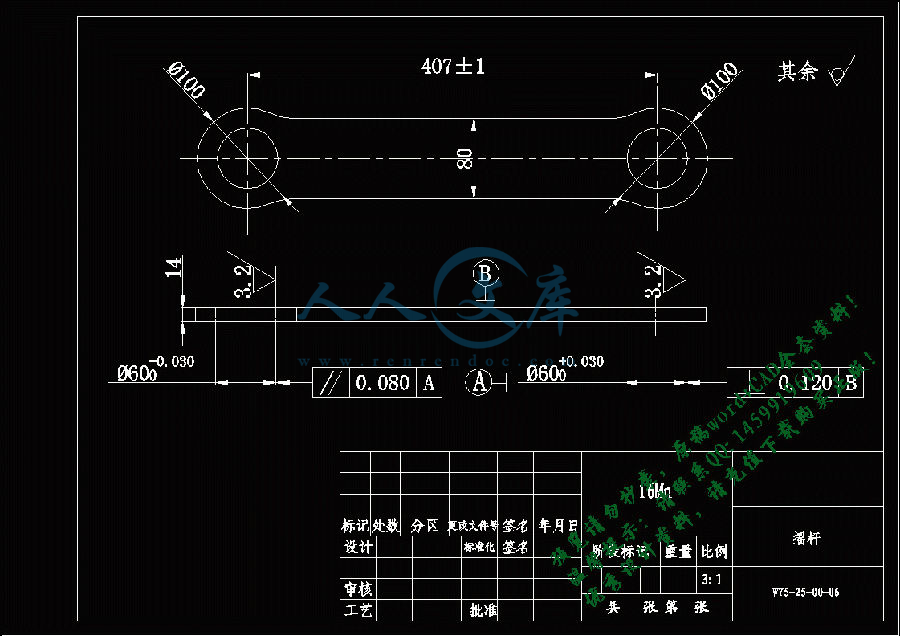
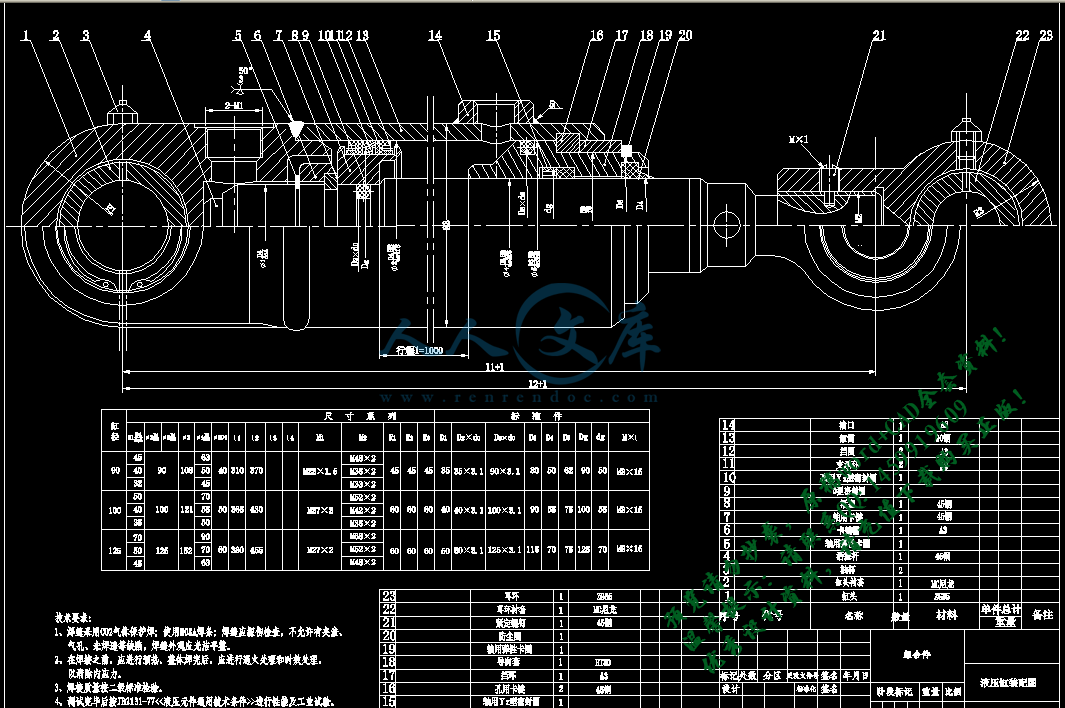
 川公网安备: 51019002004831号
川公网安备: 51019002004831号